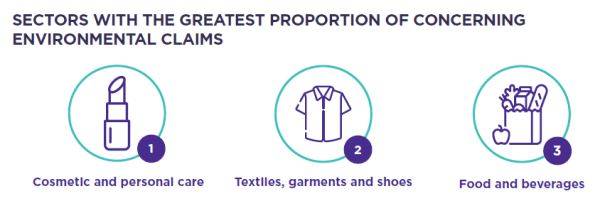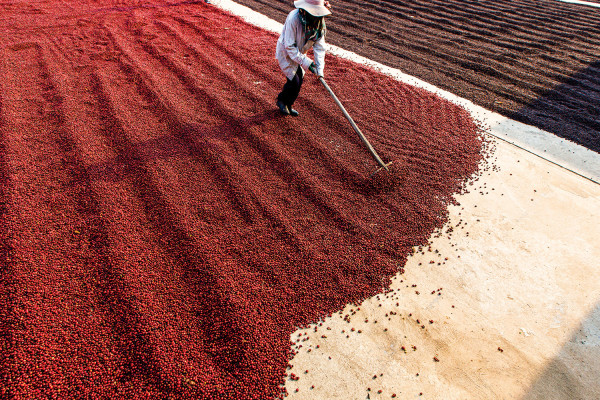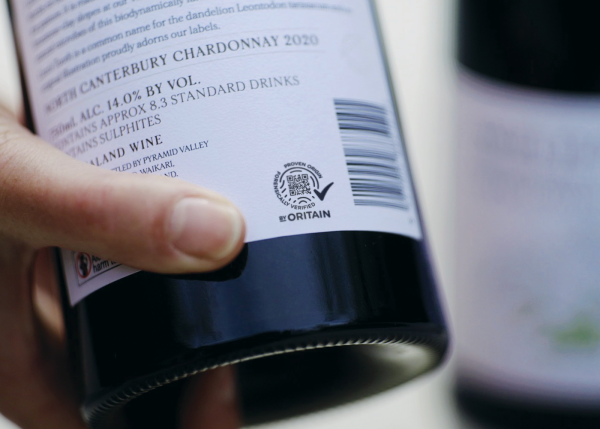Greenwashing and the ACCC: What's Covered and How to Comply
By Dr. Sam Lind | 16 January 2024
minutes to read.

Greenwashing is set to become a thing of the past with the latest guidance from the Australian Competition and Consumer Commission (ACCC). The message to employers is clear: if you do business in Australia, your environmental and sustainability claims must be watertight.
Claims such as ‘eco-friendly’, ‘100% recycled’ or ‘net-zero’ have been employed by organizations for years to foster social recognition and build competitive advantage. But not all such claims stand up to scrutiny.
In a ‘sweep’ of businesses operating in Australia, the ACCC identified that 57% of businesses made environmental claims which had the potential to mislead consumers. The industries most at fault were cosmetics and personal care, textiles, garments and shoes, and food and beverages.
Business must now walk the talk. When it comes to the ACCC, words won’t win – working will. Guidance has been drafted to address the concerns raised, but the challenge for many employers lies is knowing how best to action these.
In this article we’ve broken down the key parts of the legislation: how big is the issue, who is impacted, what are the key principles, and what should businesses do to comply. As Oritain’s science advisor, I’ll also share some advice to help businesses stay compliant and prosper as the findings come into law.
Contents:
- Which businesses are affected by the ACCC’s findings?
- Key ACCC principles to avoid greenwashing
- The importance of proving point of origin
- Addressing key concerns: Q&A with Dr. Sam Lind
Which businesses are affected by the ACCC’s findings?
The new ACCC findings govern every Australian business across all industry sectors. Any organization whose product marketing or corporate positioning includes claims pertaining to the environment or sustainability will be impacted.
The focus is on claims that are unqualified, unsubstantiated, exaggerated, or simply unclear. Whether or not they were deliberately intended to deceive is immaterial. All such claims will contravene Australian Consumer Law (ACL) and could incur penalties of fines or imprisonment.
In many cases, organizations will have made claims in ignorance or with good intentions, often having relied upon information provided by supply chain partners, vendors or external certification schemes. When fault has occurred, most will be keen to seek a resolution.
But ignorance is no longer an excuse. Staying compliant means knowing exactly what businesses can and can’t say, so let’s unpack the ACCC’s findings and assess how we can apply them.

Key ACCC principles to avoid greenwashing
The ACCC’s draft guidelines identify eight principles for trustworthy environmental and sustainability claims. Each principle and how it applies to your business messaging is summarized below.
Principle 1: Make accurate and truthful claims
Only make claims that are entirely true, supported by accepted scientific research, whose environmental benefits aren’t exaggerated, and when compared to alternatives are done so fairly.
Principle 2: Have evidence to back up your claims
Substantiate all claims with credible independent, scientific evidence that consumers can access and understand.
Principle 3: Don’t leave out or hide important information
Make all information related to the claim transparent, easily readable and not hidden in the small print.
Principle 4: Explain any conditions or qualifications on your claims
If your claims require the presence of certain conditions or circumstances for them to be true, explain these clearly and prominently.
Principle 5: Avoid broad and unqualified claims
Be specific when making claims about benefits, efficacy or performance, and qualify them with disclaimers if there are any limitations.
Principle 6: Use clear and easy-to-understand language
Avoid language that is highly technical or that would require consumers to have specialist scientific or industry knowledge to understand.
Principle 7: Visual elements should not give the wrong impression
Avoid icons, imagery or other visual elements that could give the wrong impression about the environmental benefits of your product.
Principle 8: Be direct and open about your sustainability transition
Promote your company’s green aspirations but be clear on timeframes and realistic with your promises.
The importance of proving point of origin
Point of origin, or the location from where materials used in a product are sourced, is a specific area identified by the ACCC. Section 29 of the ACL prohibits making false or misleading representations concerning the place of origin of goods. This could relate to any material used, at any stage of the production and supply process.
Brands use origin-based messaging to market their products based on their provenance from areas deemed by consumers to be higher quality. Common examples include Egyptian cotton or Brazilian coffee beans, among many others.
But certain environmental claims can be harder to prove. Fibres, coffee or cocoa claimed as originating from areas that don’t contribute to deforestation may be false if the brand doesn’t know where its wholesale supplier sources its raw materials from.

The solution lies in tracing the origin of goods, but reliance on traditional paper-based documentation will sell businesses short. Such methods are often piecemeal, unreliable, and without accepted scientific rigour.
The ACCC makes it clear that all environmental claims should be based on robust scientific evidence or research. Oritain has proven expertise in this space, providing forensic scientific methods to definitively prove the origin of a wide range of organic materials, from cotton to coffee and horticulture to honey.
By analysing the different chemical elements imbued within a product, which are created by environmental factors like soil, sunlight and rainfall that are unique to every area, the exact point of origin can be pinpointed. This ‘origin fingerprint’ therefore provides definitive, scientific proof to substantiate product claims.
Businesses can make use of the Oritain Trust Mark in their product branding – a strong visual endorsement that underscores a brand’s authenticity and builds consumer trust.

Addressing key concerns: Q&A with Dr. Sam Lind
1. How could businesses be guilty of making inaccurate or untruthful claims, particularly unknowingly?
The biggest risk around claims is vendor self-declarations. That is, you have a buy order for organic t-shirts and the vendor declares that they’re organic t-shirts, so it's taken at face value.
But without objective methods to establish whether something is true, how can you be certain of the claim? And if you can’t be certain where your product has come from, how can you claim that its production is sustainable?
Even some existing certification schemes may not be up to the standard now required under the ACCC and other regulations, so these also shouldn't be taken at face value.
2. How does the nature of supply chains create greater risk of noncompliance?
In a complex supply chain that’s going through multiple hands, there’s no set of documentation that carries ‘dirt to shirt’ traceability. Manufacturers are first and foremost looking at technical specifications and anything else becomes secondary, which introduces risk.
So, a brand could test a t-shirt for strength, colour fastness, and other technical textile attributes, but there're very few objective ways to then interrogate other specifications around sustainability, ESG fibre sourcing, country of origin, etc.
3. What methods should a company use to substantiate their claims?
My biggest recommendation is to look at objective methods to establish whether something is true. Vendor self-declarations and audits happen maybe once a year, but what about in between?
Oritain is a permissionless system – we don’t rely on subjective information that could be coming from three or four different supply chain participants. We evaluate the origin of a physical product right there in front of us, so there’s an objective measure to understand whether a country of origin claim is true.
4. Why is the origin of goods such an important part of sustainability and why is it more important now?
It’s more important now because it’s valued more highly by customers. The specific origin of goods implies differing attributes relating to its production sustainability characteristics, such as in quality of raw materials or worker labor rights.
If you're looking at a garment with claimed sustainability credentials, but it's been tested by Oritain and shown to be non-compliant with the claimed country of origin, then that should bring into question all the other attributes which are associated with that product.
Equally, if it’s shown to genuinely be from the claimed country of origin, then additional trust can be placed on those other subjective measures which may have come from the supply chain.
5. Are businesses doing enough in this space right now?
I think they're finding that it's easy to talk about and harder to do. We speak with large retail businesses around the source of their supply chains and obtaining information past tier one is challenging. They may know who they buy their t-shirts from but have very little knowledge further down.
There’s a need to understand the supply chain better now than what may have been done in the past, and that’s important from both the regulatory risk mitigation perspective and a revenue perspective.
Meeting the ACCC guidelines needn’t be a headache for Australian businesses. Working with industry experts like Oritain will help you prove your sustainability and traceability claims and stay compliant. Speak with our team if you’d like to know more.
Disclaimer: The information provided in this document does not and is not intended to constitute legal advice. Instead, all information presented here is for general informational purposes only. Counsel should be consulted with respect to any particular legal situation.
